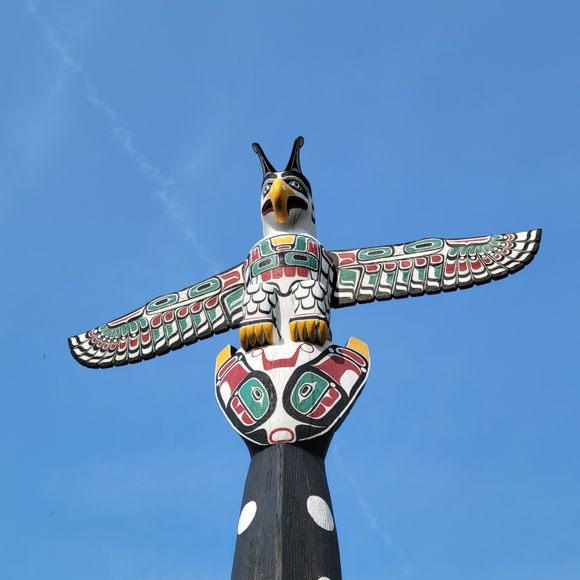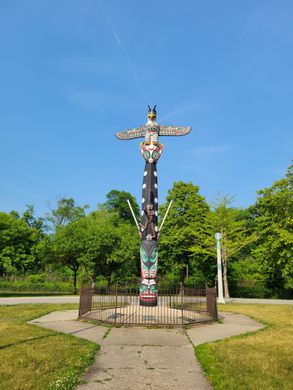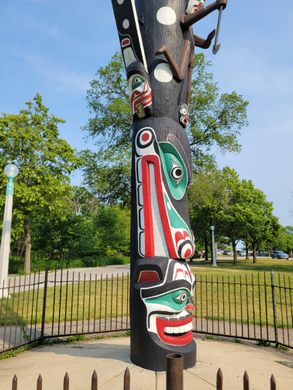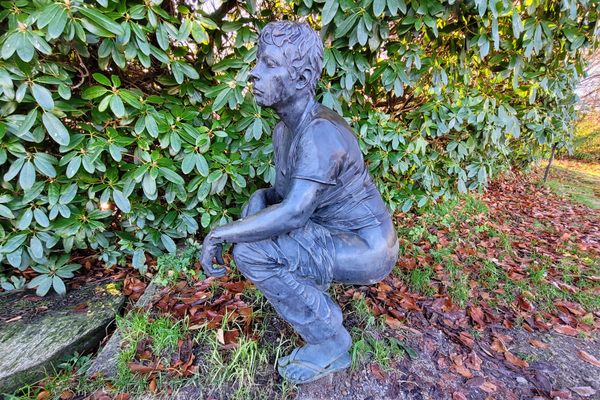AO Edited
Kwa-Ma-Rolas Totem Pole
Kwanu'sila the Thunderbird has been silently watching over Chicago for more than 100 years (kind of).
Dotted with skyscrapers like the Willis Tower and Tribune Tower, Chicago’s iconic skyline stands watch over Lake Michigan. But less well-known is the vigilant thunderbird Kwanu’sila surveying the city from atop the 40-foot-tall Kwa-Ma-Rolas totem pole in Lincoln Park.
Totem pole carving is a common tradition among Indigenous peoples of the American Pacific Northwest and British Columbia, such as the Haida (“hydah”), the Kwakwaka’wakw (“kwak-wak-ya-wak”), the Nuxalt (“nu-halk”), and others. These massive monuments often commemorate a family’s lineage or document legendary stories.
The Kwakiutl Indians of Vancouver Island carved the massive Kwa-Ma-Rolas totem pole in the early 20th century. Perched atop the monument is a thunderbird, a legendary spirit that controls storms and is often found in Indigenous mythology. The thunderbird came to represent some of the clans found on Vancouver Island.
In one story, a man sets out to build a house, but could not put up the huge crossbeams alone. He sat by the banks of a river, heavy-hearted, when he saw a great thunderbird. If only this bird were a human, he cried. The bird lifted his mask to reveal a human face and offered to help. The bird grabbed the crossbeams with his talons and put the beams into place.
The thunderbird decided that he would like to live with the man, and so he removed his costume and sent it to the heavens, commanding it to never thunder out of season. It shall only thunder when one of his descendants is near death.
The bird at the top of the Kwa-Ma-Rolas totem pole with its wings outstretched is Kwanu’sila the thunderbird, and the person brandishing a spear is the man from the legend. The original totem pole, carved by Chief George Hunt, was made for and first displayed in the city during the 1893 Chicago World’s Fair. The pole, which was carved entirely out of a single cedar tree, was so big, it needed to be transported via railroad. Later, in 1929, cheese baron James L. Kraft, founder of Kraft Foods, donated the totem pole to the city of Chicago where it was later installed in Lincoln Park.
Unfortunately, due to vandalism, bad weather, and carpenter ants, the totem pole began to deteriorate, requiring substantial restoration work with little respect to the original appearance.
Seeing the carving in a degraded state, representatives from the Kwakwaka’wakw tribe successfully advocated to have the pole returned to British Columbia. A new, replacement pole was carved in 1986 by Tony Hunt, a woodcarver who belongs to the Kwagulth tribe, who stayed faithful to the original design.




















Follow us on Twitter to get the latest on the world's hidden wonders.
Like us on Facebook to get the latest on the world's hidden wonders.
Follow us on Twitter Like us on Facebook